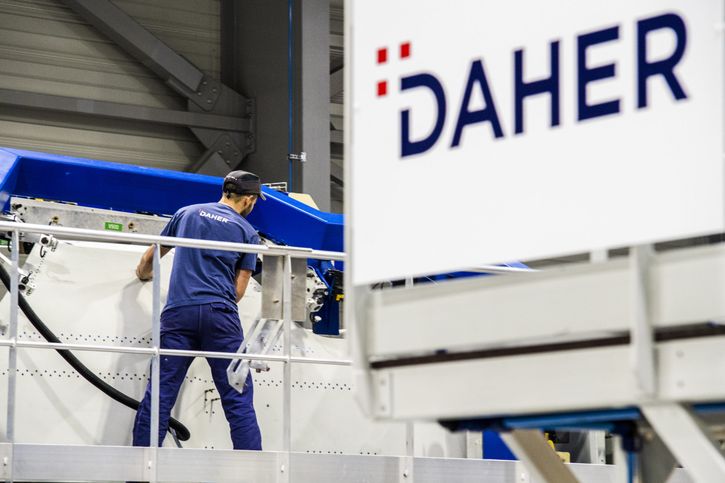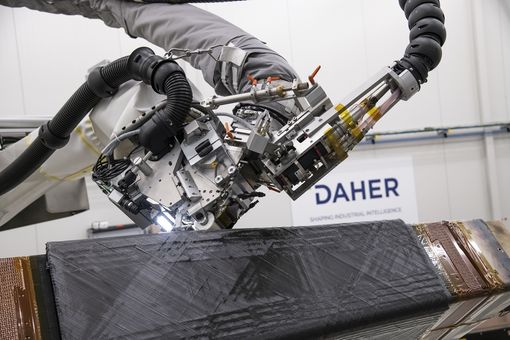More Environmentally Friendly Aeronautical Structures

Daher has long integrated environmental concerns into its R&D roadmap: innovating for more responsible aviation by developing new, more efficient manufacturing models and processes.
By focusing on reducing the weight of aerostructure and engine components, improving aerodynamic performance, and enhancing the surface quality of flying products, Daher aims to actively contribute to lowering aviation-related emissions.
Since 2009, Daher’s R&D department has been committed to innovation in composite materials, enabling lighter components and improved energy efficiency for aircraft. These materials are used to reduce the weight of parts on Daher’s own TBM and Kodiak aircraft, as well as on the aerostructures of its clients’ aircraft—helping replace traditional metal parts in programs such as the Airbus A320 and Boeing 737.
This R&D strategy continues through various research initiatives, notably within the framework of CORAC (French Civil Aviation Research Council) projects, which support innovation for cleaner aviation.

In Action: Lightweighting and Eco-Design
Aircraft Weight Reduction
For several years, Daher has been reducing the weight of its aircraft to lower fuel consumption and CO₂ emissions. For example, on the TBM aircraft, improvements include:
- Air intake, cowling, engine frame: 10% weight reduction using composite materials
- NACA duct and distributor: 50% weight reduction through plastic additive manufacturing
- Rear fuselage: 15% weight reduction with composite materials
- Engine environment: 50% weight reduction using plastic additive manufacturing
Shap’in
Launched in 2023 in Nantes, the Shap’in tech center supports Daher’s technological advancement in composite structures. It contributes to the development of new structural components and supports the training of young professionals in the aerospace sector.
Eco-conception
In partnership with the IPC Technical Center, Daher uses a life cycle analysis software (C3R Impact) to eco-design its products. This tool allows for testing and improving the environmental impact of each component, enriching composite-related databases.
Recycling and Reuse of Materials
- Recycling thermoplastic production scraps: Daher is developing a process to recover, treat, and transform production scraps from its Nantes facility into usable material for aircraft parts.
- 100% recyclable parts: By adopting welding techniques and eliminating rivets during assembly, Daher creates fully recyclable parts, contributing to a circular economy and reducing waste.
Our Ambition
Daher is committed to becoming a pioneer in lightweighting and decarbonizing aeronautical structures. Its goals include:
- By 2027: Achieve technological maturity of subsystems to participate in preparatory programs for future short- and medium-haul aircraft (SMR).
- By 2035: Reach industrial maturity of products and subassemblies to become a key player in SMR and market zero-waste products.
- By 2050: Achieve Net Zero Carbon with highly decarbonized Daher aircraft offering innovative solutions.

